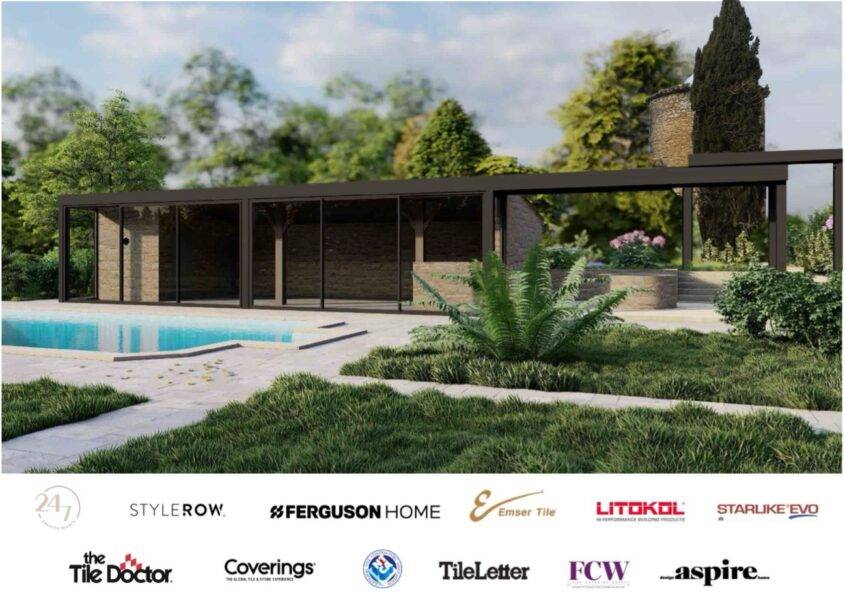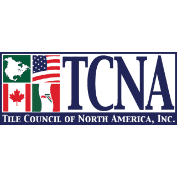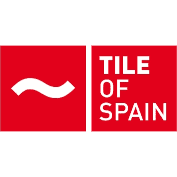Guest Blog Post by: I.C.E. House by Jennifer Farrell
Coverings 2025 is fast approaching, and one of the big questions always answered at each show is what’s emerging in the future of surface materials. At the 2025 show, a new feature in The Coverings Lounge will deep-dive into what materials in the home of the future could look like, with an immersive exhibit exploring I.C.E. House: Interconnected Changeable Environments. The I.C.E. House Showhome Experience, created by celebrity designer Jennifer Farrell, envisions a multi-structure abode that changes over time as the lives of its residents change, with an ancient-meets-modern aesthetic and three tenets at its core: Sustainability, Adaptability, and Livability. While the I.C.E. House Showhome physically opens in the South of France for its grand reveal in Fall 2026, here’s a sneak peek at those three core philosophies that guide the home of the future:

A view of Indy House, one of the three environments at Jennifer Farrell’s future-forward showhome, I.C.E. House: Interconnected Changeable Environments.
Sustainability as a Whole-Home Approach
The word “sustainable” has myriad meanings, that at times may be loosely applied. But at I.C.E. House, the application is with a holistic overview: materials, products, and systems all working together to create a sustainable universe.
– Surface materials are selected for their environmentally sound practices, renewable resources, and in many cases for their local sourcing. I.C.E. House is located in the South of France, and tile is sourced from neighboring Tile of Spain – offering the finest in artisanship, while simultaneously reducing shipping and transport resources.
– Grout and installation products are critical, not only for their performance, but for their non-toxicity and environmentally safe characteristics. Starlike Evo by Litokol is the grout of choice at I.C.E. House, for its exceptional color palettes, low VOC emissions, and its non-corrosive, non-hazardous environmental impact.
– Infrastructure systems at I.C.E. House define the future of home as fully off-the-grid capable. Two wells, two septic systems, water recapture system with underground storage tank, solar and wind power with battery wall, a diverse food garden, and even smart technology that can effortlessly switch to unplugged autonomy give the property the ability to be completely self-sustaining.
Adaptability in Form and Function
Thinking long-term doesn’t mean a 5-year plan, but rather a 50-year plan. The adaptability of a product, space, and property is a key component in the home of the future – which means advance planning for how an environment could evolve over time to support its inhabitants.
– Changing Spaces may sound reminiscent of a home makeover show, but the concept of spaces that change means designing rooms with multi-functional elements. Bookcases that slide to reveal hidden rooms, walls that transform into desks and beds are amongst the Murphy Door inventions that are an integral part of I.C.E. House adaptability – and mean that the spaces can change into anything they need to be as life needs change.
– The mega mansion gives way to the luxury home of the future, with multiple, smaller structures connected by open-air breezeways that can enclose in glass to become rooms when needed. That enables I.C.E. House to grow and shrink in its occupied footprint, and to conserve energy when structures are disconnected and not in use – or to transform into individual residences for multi-family or multi-generational living.
-Timeless materials with aesthetic longevity open possibilities for how spaces can adapt. Resilient tile flooring in evergreen patterns, like wood-look porcelain planks and parquets, enable an environment to evolve from guest house to pool house to yoga studio with ease.
Relatable, Durable, and Healthy as the Standards for Livability
Livability means exactly what the word implies: no matter how beautiful a space or product may be, the home of the future is designed for real people who want their homes to support a relaxed, comfortable, healthy lifestyle – and designs that support that livability.
– Materials that have a sense of relatable heritage, with a fresh spin on scale, color, or shape can imbue a product with the feel of modern timelessness. Textural, artisan-inspired tile and surfaces drive home the essence of livability.
– Products that can handle real-life living are a must in the home of the future. No slippery floors that can’t be walked on; no countertops that have to be covered with plastic mats to protect them from the humans who use them.
– Spaces that have comfort, balance, and support health & wellness are at the core of emerging design. The health & wellness movement is driving the evolution of surfaces, as health-conscious options like low-silica surfaces and non-toxic construction products become desired selections in tomorrow’s home.



Sustainability, adaptability, and livability as the three guiding principles for the home of the future are applied throughout the materials, products, and whole-home design at I.C.E. House.
For more information about I.C.E. House by Jennifer Farrell, visit icehousebyjenniferfarrell.com

![coverings image v2[1] coverings image v2[1]](https://www.coverings.com/wp-content/uploads/elementor/thumbs/coverings-image-v21-r3hhnfi2fdr0t719bw6mtic9tizvefky4mvrpd80io.jpg)





